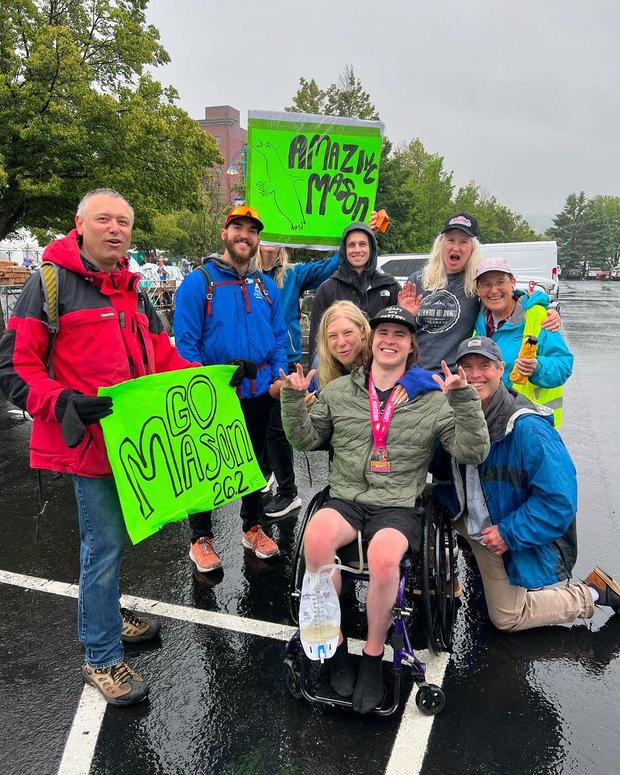Mason Branstrator had it all. At 17, he was living the dream—running, skiing, playing soccer—until the day everything flipped upside down. A normal day on the slopes in Minnesota turned into a nightmare. He took off from a ski jump, a bit too fast, and that’s when it all went black.
The Diagnosis: Devastation Hits Hard
When Mason woke up, the news was grim. He had broken his T-12 vertebra, leaving him paralyzed from the waist down. The doctors didn’t sugarcoat it. They told him straight: “You might never walk again.” For a kid who was always on the move, those words were like a punch to the gut. It wasn’t just about losing the ability to walk; it was about losing the life he knew.
The Long Road to Recovery
Mason spent nine days in the ICU, wrestling with the reality of his situation. Then, he was flown to Craig Hospital in Colorado, a top rehab center for paralysis. Four long months of therapy followed. Every day was a struggle, but slowly, something started to change. Instead of seeing the wheelchair as a limitation, Mason began to see it as a symbol of freedom. “The first time I got in a wheelchair, I felt so free,” he said. That shift in perspective was the beginning of his journey back to life.
Back Home and Moving Forward
Returning to Minnesota wasn’t easy. Life had changed in ways Mason could never have imagined. But he wasn’t about to let that stop him. In a touching moment, he was crowned homecoming king, a sign that his peers still saw him as the same Mason, even if his life was different now.
Graduating high school was another milestone, but instead of staying close to home, Mason headed back to Colorado. He enrolled at the University of Denver, not far from Craig Hospital. The place that had helped him so much was now where he would help others as a mentor. But living in a wheelchair brought new challenges every day.
Navigating a New World
Everyday tasks became Herculean efforts. Getting in and out of his car, finding ramps, maneuvering stairs—it all took extra time and energy. But Mason wasn’t one to back down. He found ways to adapt, even when it meant his dad carrying him up stairs when there was no elevator.
Despite these challenges, Mason’s athletic spirit never wavered. About a year and a half after his accident, he realized walking wasn’t a realistic goal anymore. So, he turned his focus to adaptive sports. And that’s when his world truly opened up.
Saying Yes to Life
Once Mason started embracing new opportunities, there was no stopping him. He began playing wheelchair sports, working out in his chair, and even surfing in Santa Cruz. Each new experience was a testament to his resilience.
Training for a marathon was next on his list. When CBS News met him at the University of Denver, he was gearing up for Grandma’s Marathon in Duluth, Minnesota. He finished the race in just over two hours, proving to everyone—including himself—that he was still very much an athlete.
Finding Purpose Through Pain
Mason’s journey wasn’t just about physical recovery. It was about finding a new purpose. Before the accident, he had dreams of helping others but didn’t know how. The accident gave him that “how.” He started sharing his story on Instagram, quickly gaining a massive following. His posts weren’t just about the extraordinary—they were about the everyday challenges he faced and overcame. And people noticed.
Messages began pouring in. People told Mason how his story had inspired them, how they had used his methods to tackle their own challenges. In those moments, Mason realized his dream was coming true. He was helping people, just as he had always wanted to.
A New Kind of Freedom
Mason Branstrator’s story is one of triumph over tragedy. It’s about redefining what it means to be free. For Mason, freedom isn’t about walking again—it’s about living life on his own terms, wheelchair and all. It’s about saying “yes” to new experiences, helping others, and finding joy in the journey, no matter how tough the road may be.
In the end, Mason didn’t just survive—he thrived. And in doing so, he’s shown the world that even when life takes everything from you, there’s always something left to give.

